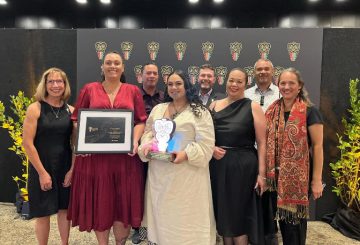オーストラリアとニュージーランドはどちらもかつてイギリスの植民地でしたが、先住民に関する歴史は大きく異なります。
オークランドのアートギャラリーには、アボリジニとトレス海峡諸島民の芸術コレクションがニュージーランドでこれまでに見られた中で最大のコレクションが展示されていました。ヴァーノン・アー・キーの「イフ・アイ・ワズ・ホワイト」という作品には、オーストラリア先住民が直面している課題が描かれています。
オーストラリアは、アボリジニとトレス海峡諸島民を自国の最初の住民として認め、彼らに政治の土台を与えるという憲法改正案である「ザ・ヴォイス」に投票することになっている。しかし、世論調査では失敗する可能性が示唆されている。このことはニュージーランドの多くの人々を驚かせている。マオリ先住民族は1840年のワイタンギ条約によって権利が保護されている。たとえこの条約が1970年代まで完全には守られていなかったとしても。
両国には大きな違いがあります。
- 人口:オーストラリアの人口は2,600万人で、オーストラリア先住民は 3.5% を占めています。ニュージーランドの人口は500万人で、マオリ語は
- 文化:マオリの文化と言語はニュージーランドではよく理解されています。オーストラリアには150を超える固有の言語があり、そのほとんどが絶滅の危機に瀕しています
- 政府:オーストラリアは州の責任を負う連邦です。ほとんどの権限はニュージーランド政府にあります。
16.5% を占めています。
。
1867年から、ニュージーランドのマオリの人々は議会の特別議席を獲得しました。オーストラリアでは、英国王室は先住民族と交渉したり、先住民を主権者として認めたりしませんでした。この違いは植民地が設立されたときに始まりました。
ニュージーランドは1970年代からワイタンギ条約を締結して植民地時代の過ちを修復してきたが、オーストラリアが先住民の代表制について議論しているのは今になってやっとだ。
多くのオーストラリア人は、自国における先住民の扱いの全容を知らない。これには、子どもの強制移送や、現在の不利益をもたらしている政策が含まれます。ニュージーランドのマオリ族の歴史は、よりオープンなものと見られている。
要約すると、両国には類似点はありますが、先住民に関しては異なる道を歩んできました。これは現在の政治や社会的態度に反映されています
。




























































